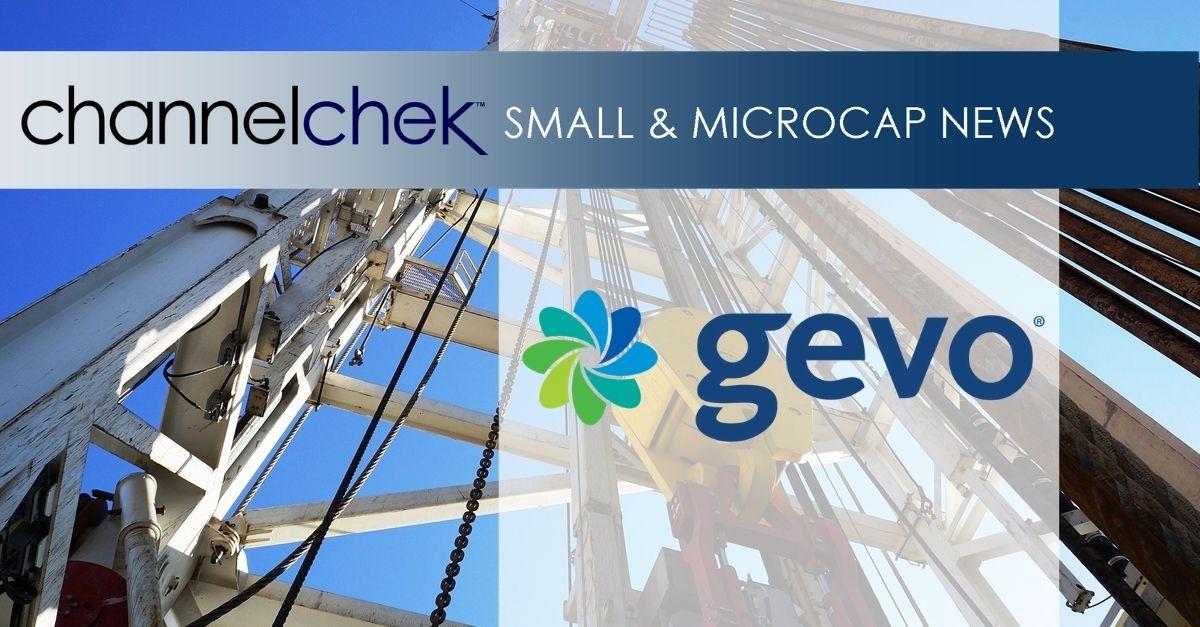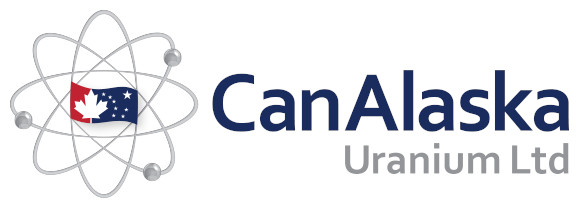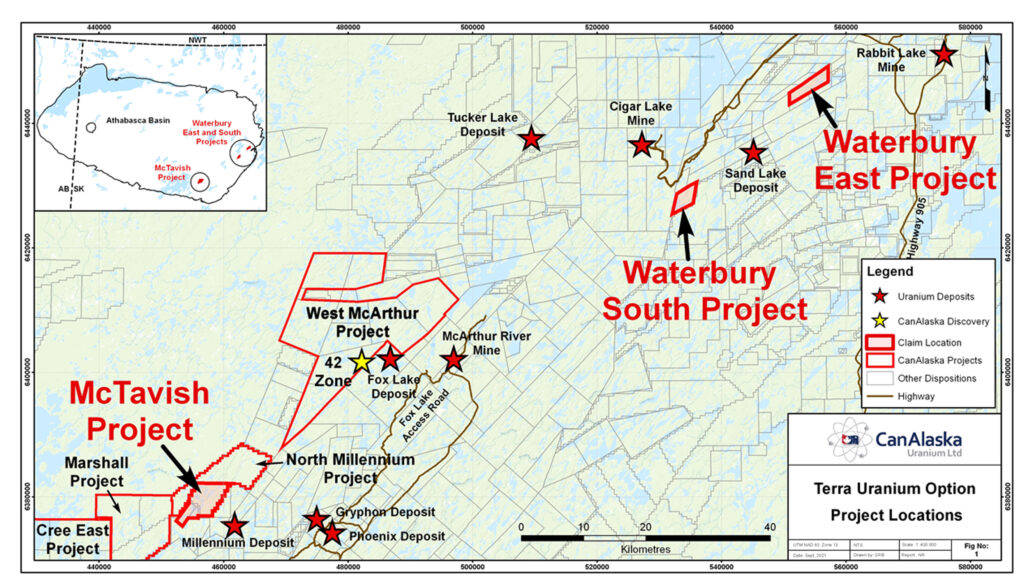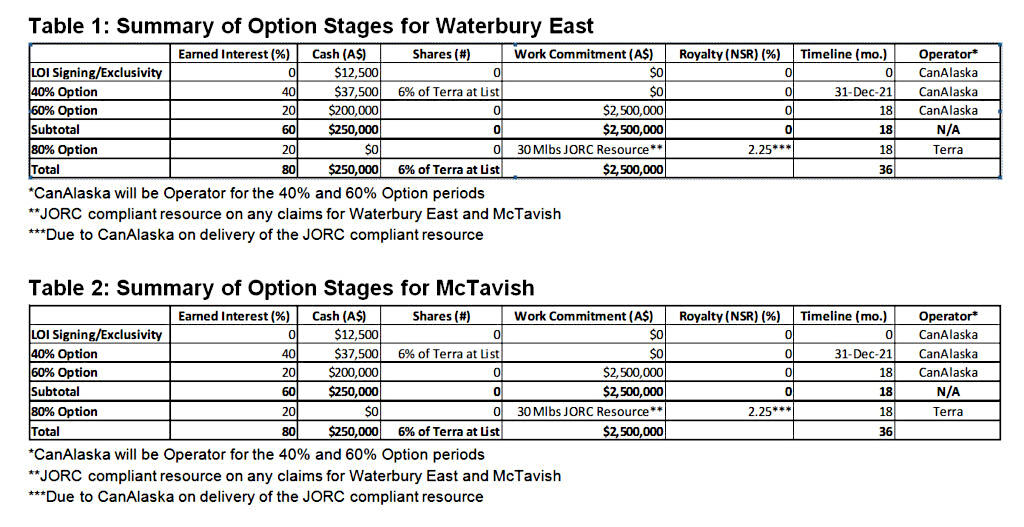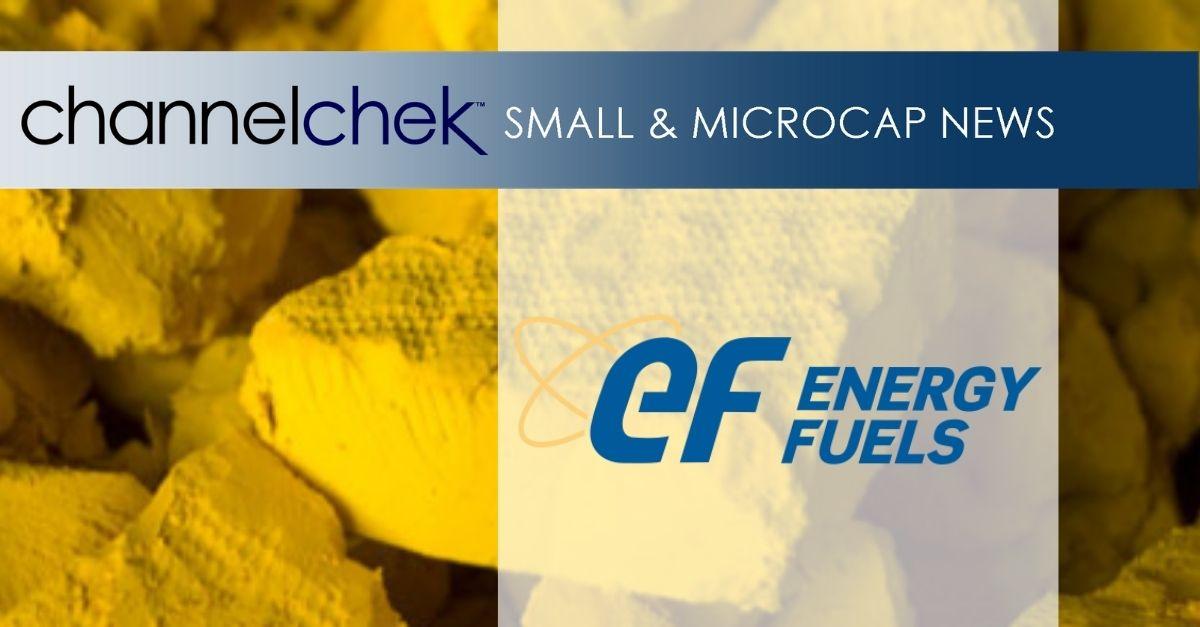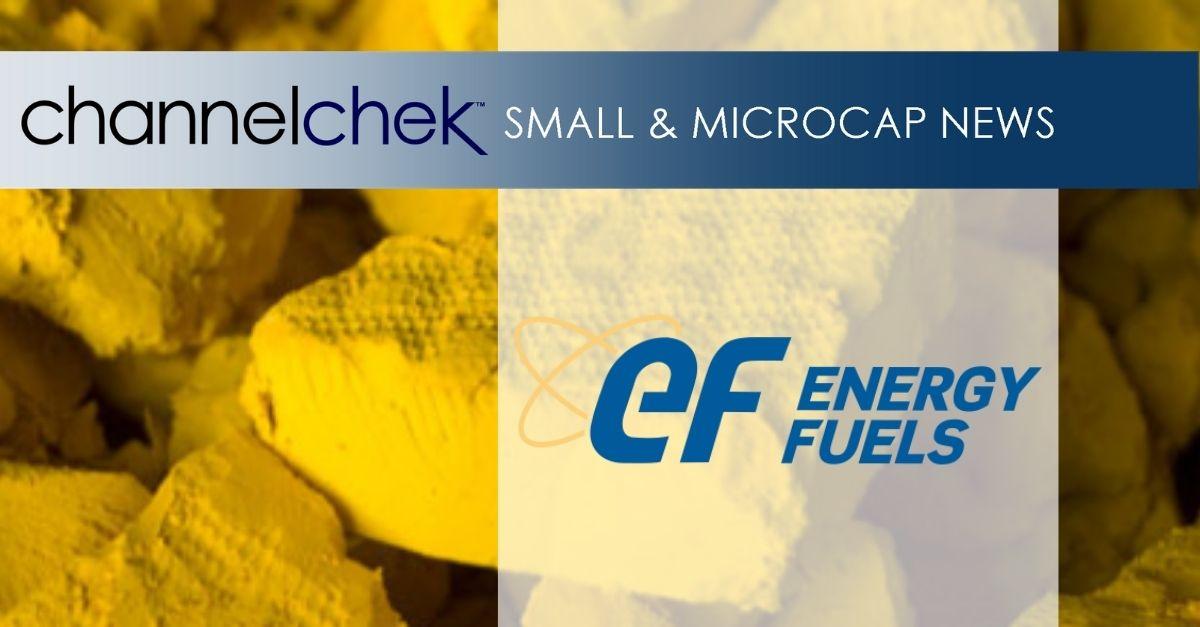
Energy Fuels Hosts Mining, Environmental and Political Heavyweights to Showcase Uranium Activities and Introduce Production of Rare Earths at its Blanding, Utah Facility
Shipments of commercial quantities of rare earths from Energy Fuels’ White Mesa Mill in Blanding represent a milestone in the creation of a new supply chain reducing dependence on foreign suppliers, while boosting significant economic potential to the area
BLANDING, Utah, Sept. 16, 2021 /CNW/ – Energy Fuels’ President and CEO, Mark Chalmers is hosting business, community and industry heavyweights in Blanding, Utah to introduce the commencement of production and shipments of an intermediate rare earth element (“REE”) product, called mixed rare earth carbonate (“RE Carbonate”), at its Utah-based White Mesa Mill (the “Mill”). Approximately 15 containers of RE Carbonate (300 tonnes of product) produced at the Mill is being shipped to Europe where it will be processed into separated rare earth oxides and other value-added RE compounds, thereby creating a new U.S. to Europe RE supply chain along with new opportunities and financial benefits for the surrounding communities. The Mill will be producing rare earths as a complement to its established uranium production business.
The Company will also showcase its U.S. industry-leading uranium production capabilities. Energy Fuels has been the largest producer of uranium in the U.S. for the past several years, boasting more uranium production facilities, mines and capacity than any other U.S. company. The White Mesa Mill is the largest uranium production facility in the US and America’s only operating uranium mill. Uranium is seeing increased interest recently, as it is the fuel for nuclear energy, which is the largest source of clean, carbon free energy in the U.S.
REEs are necessary in the production of hundreds of everyday and specialty items with a wide range of consumer applications, including cell phones, computer hard drives, electric and hybrid vehicles, and flat screen monitors and televisions. They also have significant national defense uses including electronic displays, guidance systems, lasers, and radar and sonar systems. Furthermore, with the global push to reduce greenhouse gas emissions, the expansion of green technologies such as solar and wind will continue to play a critical role, and REEs are a fundamental raw material used in the manufacturing of these clean energy sources. There are currently no U.S. companies producing separated REE oxides or any other advanced or value-added REE compounds, thereby making the US 100% dependent on the importation of these critical materials. Energy Fuels is determined to reverse that reliance and lessen the risk of disruption to the clean energy economy and our national defense.
“This is an exciting time for all of us at Energy Fuels in both the uranium and rare earth sectors,” said Chalmers. “We believe the San Juan County community will benefit greatly from this rare earth initiative, as it will offer not only a safe, environmentally sensible, and domestically-generated product, but it will also stimulate local employment and be an economic boost to the area.” The White Mesa Mill is currently one of the largest private employers in the county, and it is estimated that this new rare earth effort could result in an investment of hundreds of millions of dollars into the facility, which could translate into 100+ jobs in the region—one of the largest reinvestments this region has seen in decades. “In addition to the economic benefits to Utah, restoring rare earth production to the United States will greatly benefit the entire U.S. economy and manufacturing sector by providing a domestic source of clean energy materials produced to the highest global standards for environmental protection, sustainability and human rights, while also allowing for source validation and tracking from mining through final end-use applications,” added Chalmers. “With the increased demand for rare earths—up to a fivefold demand increase over the next 10 years—we will need all hands-on deck. Combined with the current resurgence in uranium, rare earths represent a truly an immense opportunity for San Juan County, the State of Utah, and the United States as a whole.”
This move by Energy Fuels comes at a time when the Biden administration has made it a priority to reestablish the rare earths industry in the US. Currently, China dominates every aspect of the REE industry from mining to the manufacturing of REE magnets. In the early 1990’s, China produced 38% of world’s REEs, the US produced 33%, Australia produced 12%, and Malaysia and India produced a combined five percent with several smaller countries making up the rest (Source: What are rare earth elements, and why are they important? | American Geosciences Institute). However, a significant shift in those percentages occurred, and by 2011 97% of the world’s REEs were produced in China. While China is expected to continue as the dominant player in the global REE industry, Energy Fuels believes it can create a low-cost, secure domestic alternative for end-users seeking diversity of supply and competition.
Headquartered in Lakewood, Colorado, Energy Fuels currently plans to ramp up to process up to at least 15,000 tons of monazite per year at its White Mesa Mill. This amount of monazite contains roughly 50% of current U.S. rare earth demand, along with significant quantities of uranium, which will be recovered for use in domestic nuclear energy production. “Energy Fuels and our partner, Neo Performance Materials, have made significant steps toward restoring critical U.S. and European rare earth supply chains,” added Chalmers. “We are strategically seeking to increase our rare earth carbonate production in the coming years, since we first started acquiring monazite ore produced in the State of Georgia earlier this year.”
Successfully producing REEs, and physically delivering the first containers of RE Carbonate to Neo for separation, is an important achievement, not only for Energy Fuels, but also for the U.S. government and its efforts to restore critical rare earth supply chains. This is also good news for end-users of rare earth products in the U.S., Europe, Japan and elsewhere who seek alternative sources of rare earths produced in the U.S. and Europe that adhere to the highest global regulations and standards of environmental protection and sustainability as well as keeping a close eye on human rights.
Because monazite contains naturally occurring radioactive elements, including uranium, the White Mesa Mill is the ideal location to process this valuable material. The Mill will recover the uranium from the monazite, which will be used for the generation of clean nuclear energy. The Mill is also evaluating the recovery of thorium which has potential uses in advanced nuclear technologies along with medical isotopes needed for emerging targeted alpha cancer therapies. In addition, the monazite that is received from Georgia contains over 50% REEs, which means Energy Fuels can recover large quantities of REEs while generating relatively tiny amounts of waste. “We have an exceptional track record of environmental protection and regulatory compliance at the Mill. We also have a lot of experience in safely handling and working responsibly with low-level, natural radioactive elements contained in a variety of uranium ores and recycled alternate feed materials,” stated Curtis Moore, Energy Fuels’ VP of Marketing and Corporate Development. “Monazite sand contains roughly the same percentage of uranium as the ore found in mines in the Four Corners’ region. So, we know we will responsibly process it for the recovery of the raw materials needed for various clean energy and advanced technologies. The safety of our community and our employees is and will always remain paramount. We also are evaluating how we can do more for our local communities, particularly local Navajo, Ute, and other Native American communities.”
“Energy Fuels recognizes the lingering distrust in communities that witnessed and experienced the health and environmental impacts from historic Cold War uranium mining operations, which continue to impact perceptions. We are deeply committed to addressing the world’s most pressing environmental issues, while advancing toward the electrification of the world economy. We believe that unlocking the value of domestically produced monazite and the domestic production of rare earths, combined with our existing uranium business, is a significantly positive step.” Energy Fuels has and continues to be profoundly committed to responsible and modern mining and production, and all U.S. uranium and REE production is done to the highest global standards for environmental protection and human rights.
About Energy Fuels: Energy Fuels is a leading US-based uranium mining company, supplying U3O8 to major nuclear utilities. Energy Fuels also produces vanadium for certain projects, as market conditions warrant, as well as rare earth carbonate. With corporate offices are in Lakewood, Colorado, near Denver, and all of its assets and employees in the United States, Energy Fuels holds three of America’s key uranium production centers: the White Mesa Mill in Utah, the Nichols Ranch ISR Project in Wyoming, and the Alta Mesa ISR Project in Texas. Energy Fuels’ website is www.energyfuels.com.
CAUTIONARY STATEMENTS REGARDING FORWARD LOOKING STATEMENTS
This news release contains “forward-looking information” within the meaning of applicable securities laws. Forward-looking information may relate to future events or future performance of Energy Fuels. All statements in this release, other than statements of historical facts, with respect to Energy Fuels’ objectives and goals, as well as statements with respect to its beliefs, plans, objectives, expectations, anticipations, estimates, and intentions, are forward-looking information. Specific forward-looking statements in this discussion include, but are not limited to, the following: any expectation as to future production of uranium at the Mill; any expectation as to future production of rare earth products at the Mill or creation of a new U.S. to Europe supply chain; any expectation as to the Company’s ability to increase rare earth carbonate production; any expectations as to increased demand for rare earths; any expectation as to future production of thorium and other radioisotopes for use in emerging targeted alpha therapies; any expectation as to future revenues at the Mill; any expectation that San Juan County or Utah will realize significant economic benefits or that the Company’s rare earth initiative will create 100+ jobs; any expectation that Energy Fuels will reverse America’s reliance on imports or lessen the risk of disruption for critical minerals; any expectation that Energy Fuels will create a low-cost, secure domestic alternative for end-users seeking diversity of supply and competition. Often, but not always, forward-looking information can be identified by the use of words such as “plans”, “expects”, “is expected”, “budget”, “scheduled”, “estimates”, “continues”, “forecasts”, “projects”, “predicts”, “intends”, “anticipates” or “believes”, or variations of, or the negatives of, such words and phrases, or state that certain actions, events or results “may”, “could”, “would”, “should”, “might” or “will” be taken, occur or be achieved. This information involves known and unknown risks, uncertainties and other factors that may cause actual results or events to differ materially from those anticipated in such forward-looking information. Factors that could cause actual results to differ materially from those anticipated in these forward-looking statements include risks associated with: commodity prices; processing difficulties and upsets; available supplies of monazite sands; the capital and operating costs associated with the recovery of uranium, rare earth products, thorium and other radioisotopes at the Mill; licensing, permitting and regulatory delays; litigation risks; competition from others; market factors, including future demand for and prices realized from the sale of uranium, rare earth products, and thorium or other radioisotopes produced at the Mill. Forward-looking statements contained herein are made as of the date of this news release, and Energy Fuels disclaims, other than as required by law, any obligation to update any forward-looking statements whether as a result of new information, results, future events, circumstances, or if management’s estimates or opinions should change, or otherwise. There can be no assurance that forward-looking statements will prove to be accurate, as actual results and future events could differ materially from those anticipated in such statements. Accordingly, the reader is cautioned not to place undue reliance on forward-looking statements. Energy Fuels assumes no obligation to update the information in this communication, except as otherwise required by law.
SOURCE Energy Fuels Inc.

